6 Collectors on Their Ultimate Grail Watches, From Patek Philippe to Philippe Dufour

Sometime during the last few years, I decided it was time for me to start building my own fantasy grail list based on everything I’ve processed over the three decades I’ve been covering watches. I say “fantasy” because the prices of what I find myself coveting are beyond unrealistic, and even if I had the money, I’m not sure I could pull the trigger. But it’s fun to dream, and maybe, one day, I will own a Rolex “John Player Special” or a Patek Philippe Ref. 5950. In the meantime, I asked six real collectors, whose dreams are a little more within reach, to name their top grail watches. Unlike me, most of them have a reasonable chance of fulfilling their wrist lists.
Gary Getz, a California-based business consultant
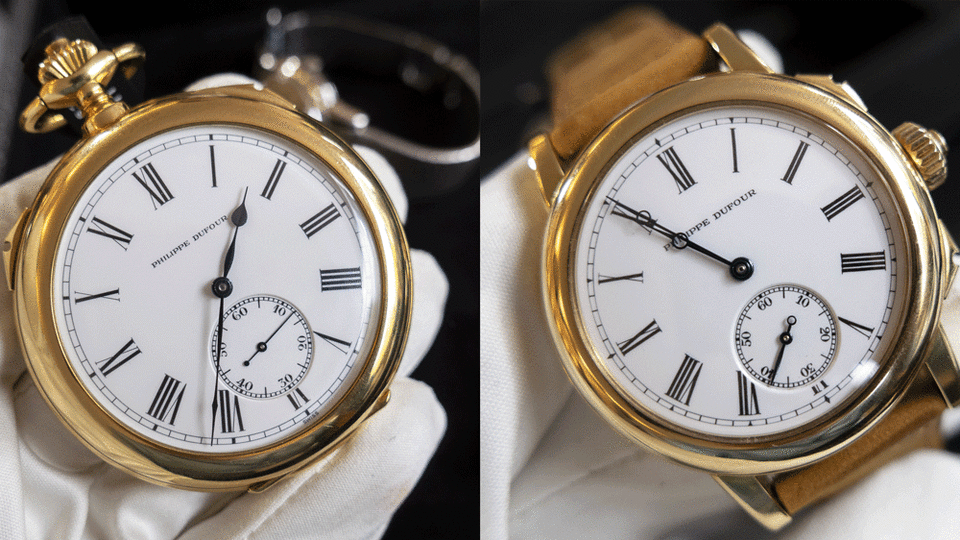
Gary Getz
More from Robb Report
These Are the Watches That Retailers Can't Keep in Stock--And No, They're Not Rolexes
Paul Newman Gave Two Rolexes to a Legendary Stuntman. Now They're Heading to Auction.
Glashütte Original Adds Groovy New Colors to Its '70s-Style Sports Watch
As the all-around man-about-the-watch world, Getz covets the Grande et Petite Sonnerie wristwatches and pocket watches from Philippe Dufour, produced in an extremely small series—four pocket watches and eight wristwatches—during the 1990s.
“Any sonnerie is a rare piece: minute repeaters that chime the hours, quarters or tens, and minutes are unusual enough in the watch world, but adding on the capacity to strike, in passing, the hours and quarters, only the hours, or to remain silent is at an entirely different level,” says Getz. “Think of it as a grandfather clock for the pocket or wrist that also sounds the time whenever you like!”
Why the Dufour pieces? “In my view, his reputation as the greatest living watchmaker is entirely deserved,” says Getz. “He was the first to incorporate a sonnerie into wristwatch form, overcoming the considerable size constraints; and having heard examples of both the wristwatch and pocket watch versions chimed I can tell you that they sing with the voices of angels.”
Sadly, they are among the very few pieces that so far have remained just beyond his reach. “For me, these watches are truly unobtainable,” he says. “They are squirreled away in the vaults of noted collectors, one of whom owns a pocket watch and two of the wristwatches. Hardly seems fair! I suspect that one piece or another changes hands on occasion through unseen private sales, and once in a blue moon, we see them at auction, where they draw prices well beyond my means. In November 2021, Phillips sold the Number 1 wristwatch Sonnerie in yellow gold for over CHF 4.7 million (approximately $5.2 million at current exchange rates at the time) and a yellow gold pocket watch version drew over CHF 2.3 million (approximately $2.5 million). I had entered the room that day with the intention of bidding on the pocket watch, but with an opening bid of CHF 1 million, I never even got to put my hand in the air!”
Alex Chen, California-based business owner
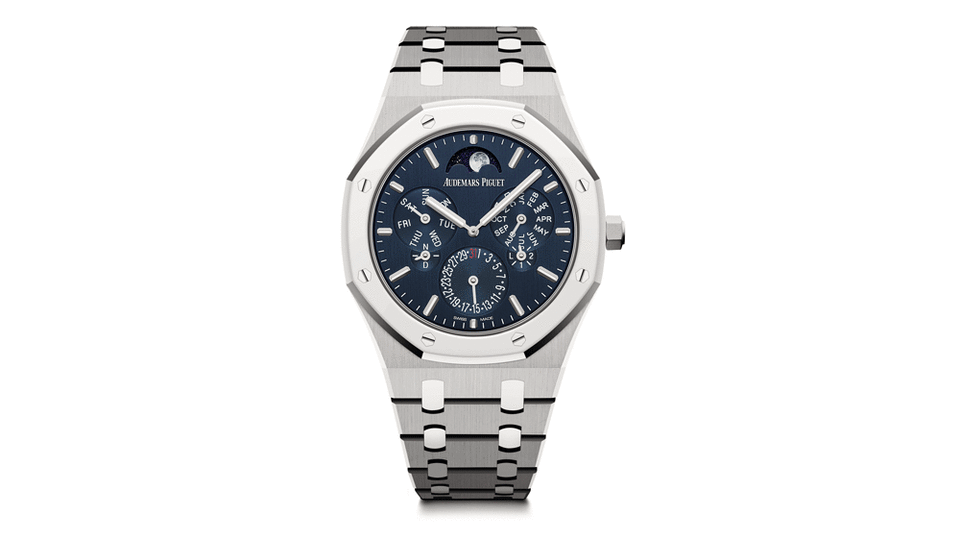
On Chen’s wishlist is the Audemars Piguet Royal Oak Selfwinding Perpetual Calendar Ultra Thin, Ref. 26586IP.OO.1240IP.01. This is the production version of the RD#2, a concept-only watch introduced in 2018 in platinum. (RD stands for Research & Development; The RD#1 from 2015 was a minute repeater and the RD #3, introduced this year, is an extra-thin automatic flying tourbillon, and one of our picks for the most collectible watches of 2022). The production version of the RD#2 (collectors still call it the RD#2) came out in 2019 with a titanium case and bracelet, which makes it lighter, even though the center links and bezel are still platinum.
“It’s one of the world’s thinnest selfwinding perpetual calendar wristwatches, with a 2.9 mm thick movement and a 6.3 mm thick case [thinner than some ladies’ quartz pieces, and thinner than the 8.3mm thick Jumbo],” says Chen. “I love it not only because of its amazing caliber (AP 5513), one of the thinnest selfwinding movements ever made, but this is a watch I could wear on a daily basis without being too flashy. It’s super lightweight. Also, instead of the tapisserie dial, it has something even more unique: a satin-brushed blue dial, with white gold applied markers, that I think is extra special. I also like that it’s not the traditional perpetual calendar with moonphase at six o’clock, but with the moonphase is at 12 o’clock.”
“It has everything I’d love to have in a Royal Oak,” says Chen. “It’s made by a manufacturer with an outstanding history in watchmaking yet is always thinking outside the box by combining the latest watchmaking techniques and craftsmanship into one modern high complication wristwatch.” How likely is he to score one? “An Audemars Piguet boutique is the only way to get qualified for one, and the current retail price is somewhere around $175,000,” says Chen. “AP doesn’t produce too many perpetual calendars, and each boutique usually only gets a few per year. It would definitely be difficult to get one at retail.”
Patrick Getreide, France-based businessman
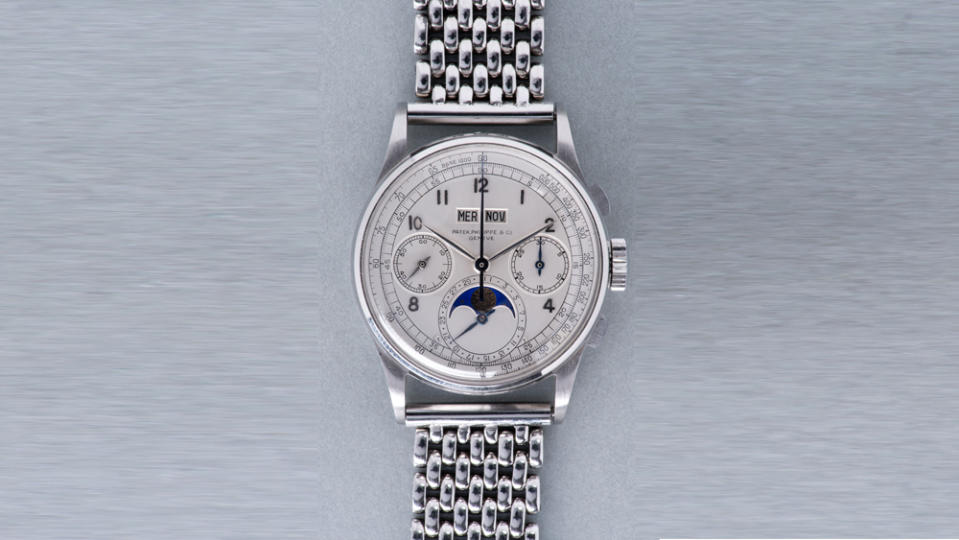
Courtesy of Phillips in Association with Bacs and Russo
Gertreide is the ultimate collector. His 600-piece collection of mostly one-of-a-kind Patek Philippes and Rolexes was exhibited at the British Design Museum last spring, marking the first time any collector has exhibited his collection in public. So, what could the owner of one of the world’s most valuable and historically important collections need to complete his collection? The first is a Patek Philippe Ref. 1518 perpetual calendar chronograph in steel, probably the single-most collectible model in the entire Patek oeuvre, of which only four exist. He knows where they are, and he estimates he would have to pay upwards of $20 million to get one. Boom.
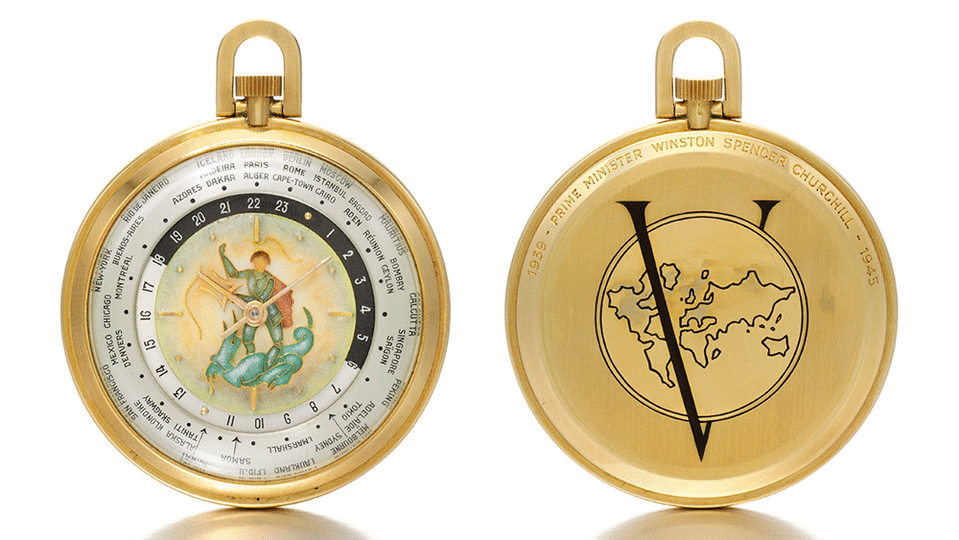
Sotheby's
His second grail is a piece that got away. He nearly bought the “Churchill victory watch,” when it came up for sale at Sotheby’s a few years ago. The yellow gold pocket watch was commissioned by a group of Swiss citizens in 1945 to commemorate the Allied victory after WWII. It was one of four created for the Allied leaders – the others were given to Charles de Gaulle, Joseph Stalin and Henry Truman. It has a V for Victory proudly engraved on the caseback to celebrate Churchill’s wartime leadership. On the dial is a cloisonné enamel painting of St. George, England’s patron saint. It was made by Agassiz and Co. and watchmaker Louis Cottier, who specialized in world timers, many of which he made for Patek Philippe. “At the time, I felt the watch didn’t obey my rules,” says Getreide. “It was not in good condition. It was all smashed up. I think he played football with it. Today, I regret it a little bit, because Winston Churchill is my hero. Now, I’m a little older, I would maybe buy it.”
Beth Jonas, Utah- and Florida-based retired scientist
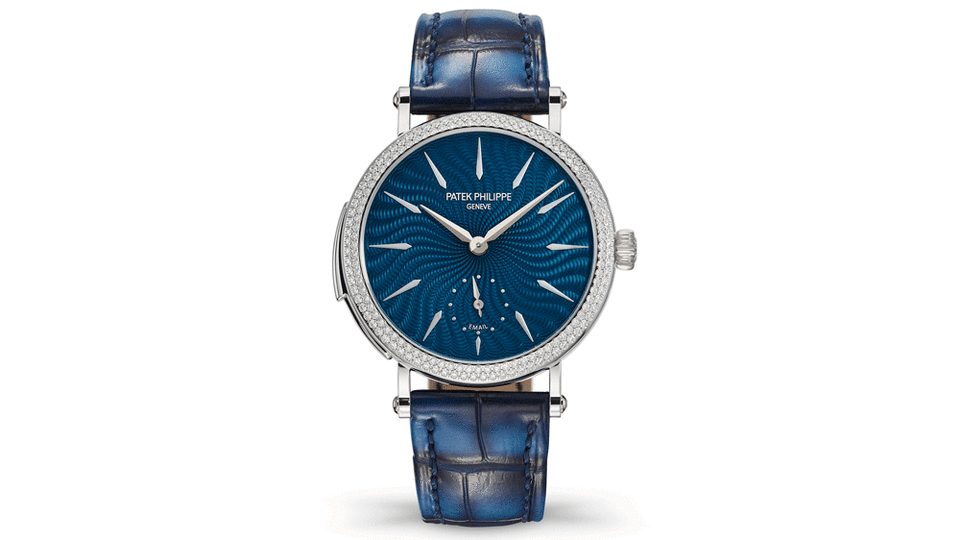
Patek Philippe
Counting a Rolex Submariner, Sky-Dweller and Yacht-Master in her well-endowed collection, as well as Patek Philippe references 5711, 4947, among others, and at least one AP Royal Oak reference, Jonas says, “I am fortunate that I have my essential watches from the big brands, so in this competitive environment I am really excited about expanding my collection into the independents.”
Where to begin? Jonas already has an F.P. Journe Elegante, a DeBethune Starry Varius, and an Akrivia 06. “I really covet my husband’s Greubel Forsey watches, in particular his titanium Sport GMT. They truly are pieces of art for your wrist, but I haven’t found a piece from their collection that fits my wrist. So, I have two grails: One I wish was made and one that is real. For my first grail, I really wish Greubel Forsey would make a smaller watch, something below 40 mm. A woman’s watch from them would just be so cool.”
Back in the real world, “If price is no limit,” Jonas’s next holy grail is the new ladies’ automatic minute repeater from Patek Philippe, ref. 7040/250G. “It has two classic gongs and a gorgeous transparent blue enamel dial with a beautiful diamond bezel. It is technically advanced and elegantly designed. Patek in my view is the best minute repeater manufacturer in the world. I understand the ladies repeater is about $450,000. It’s an application watch and apparently delivery would be some time next year.” Patek application watches are sold by application to Patek Philippe, often requiring a downpayment. But you need more than stacks of money. You must demonstrate an appreciation for Patek workmanship, and if you are a repeat flipper, you are likely to be denied access. Also, only repeat customers, who have already climbed the purchasing ladder, need apply.
“My husband and I are lucky as we are both long-term collectors with excellent connections with the key brands, as well as one authorized dealer with whom we have a great trusting relationship,” says Jonas. “In terms of access, we realize watches are currently sought by so many collectors and now investors, that obtaining a grail is not trivial.”
Lung Lung Thun, Hong Kong-based financier
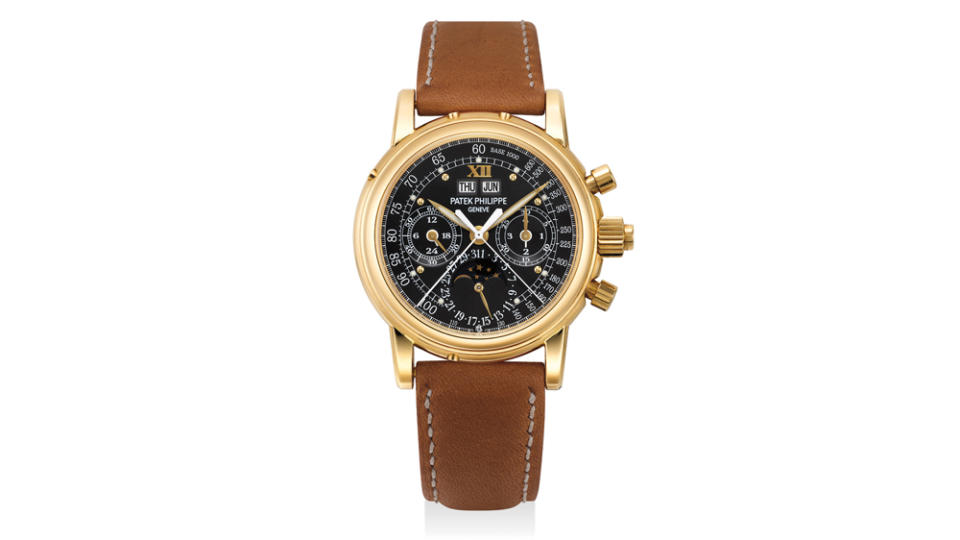
Photo: Courtesy of Phillips
A “go big or go home” type, Thus says she is always collecting everything to the extreme. “I think this carries through to my taste in watches,” she says. “I have always liked busy dials, watches with complications and bold strap choices. I think this explains why I am mostly drawn to yellow gold. It’s bold and flashy. I even enjoy the weight it carries!”
Her grail watch is a Patek Philippe ref. 5004 split seconds perpetual calendar in yellow gold. It was Patek’s first serial-produced split-seconds perpetual calendar, produced for a period of 16 years: from 1996 to 2012. “The perpetual calendar is my favorite complication and is what I believe Patek does best. Yellow gold, although not the rarest of the metals produced for this reference, will forever be my top choice. I love everything about the watch: the technical feat to build this movement, the busy dial, the masculine feel of the watch and the pump pushers.”
Thun doesn’t feel it’s the one piece that would complete her collection, “because I think collections evolve as we grow,” she says. It would, however, certainly be a hefty addition, although getting one might be a challenge. “Only about 12 known pieces were produced a year,” says Thun. “They do come up in auction and through pre-owned dealers from time to time, and the cost varies depending on the condition and metal.” A quick search of past sales (which are rare) shows the model in yellow gold selling in the $200,000 range.
Jane Chon, New York-based attorney
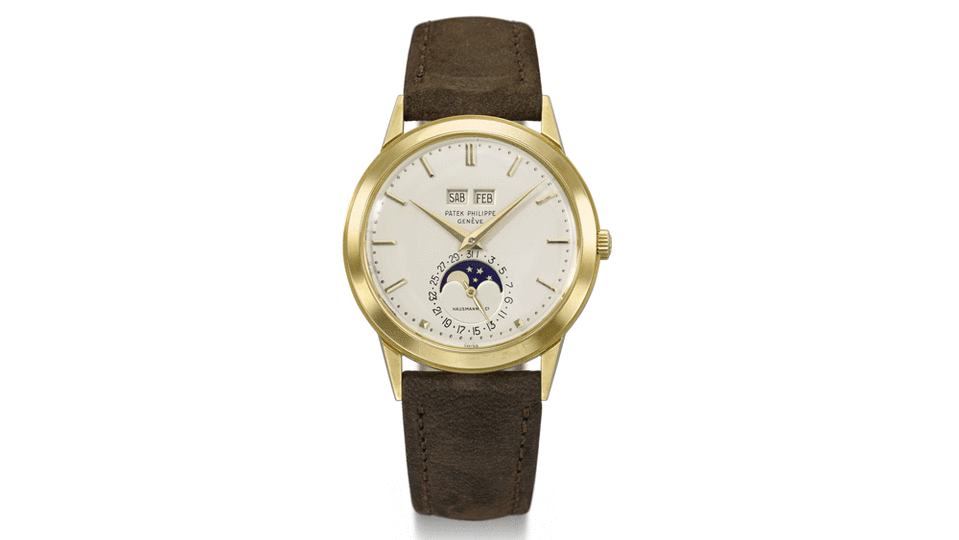
Christie's
Chon’s ideal wrist candy is an unpolished, double-signed Patek Philippe ref. 3448J perpetual calendar. “I would like the second signature to be an important historical retailer, since so many of them are now gone,” she says. “Apart from objective collectability today, a retailer signature means something to me because historically, during the time period they were common, the retailer was more important than the manufacture, something that has been forgotten. Customers bought because they trusted and admired the retailer—the manufacture was unimportant—the opposite of the attraction today.”
Some of the historical makers she refers to include Tiffany, Gübelin, Gobbi Milano, Hausmann, Trucchi and Serpico y Laino, to name a few. Patek Philippe worked with most of them, as did Rolex, from the early to mid-1900s. Patek is still working with Tiffany, and there have been Gübelin double-signed pieces made as recently as 2004.
The ref. 3448J was produced in four series between 1962 and 1985, and only between 400 and 600 were made. The majority were yellow gold, with fewer in white and rose gold, and two known references in platinum. It was Patek’s first self-winding perpetual calendar, with a 37mm case distinctive for its angular, sharp lugs. Yellow gold versions in good condition sell at auction in the $200,000-$300,000 range. Double signed versions are very rare. Christie’s sold one in its spring auction this year, signed by Italian retailer Hausmann & Co., for $264,600. The catalog essay says it is one of only three known to have been double signed by Hausmann.
“To me, the 3448 epitomizes Patek’s perfect complicated reference, and aesthetically it appeals to my tastes,” says Chon. Its proportions, angularity and legibility work for me. I have never owned a QP, and this is one of two references I believe would scratch that itch.” But she is still questioning whether or not she would pull the trigger. “To be frank I’m unlikely to pay for one, assuming I could get one,” she says. “At the end of the day I’d rather have four great pieces than one grail, and I feel I already have two pieces in my collection that I’ll hold onto as long as I can.”
Best of Robb Report
Sign up for Robb Report's Newsletter. For the latest news, follow us on Facebook, Twitter, and Instagram.

